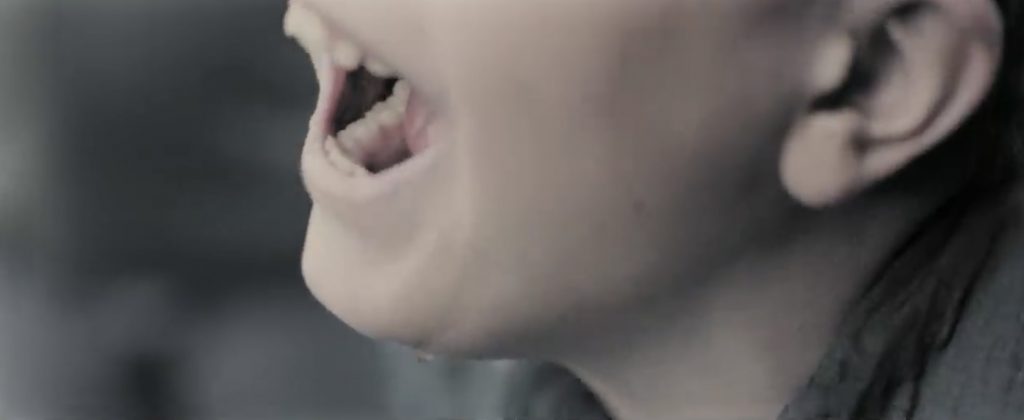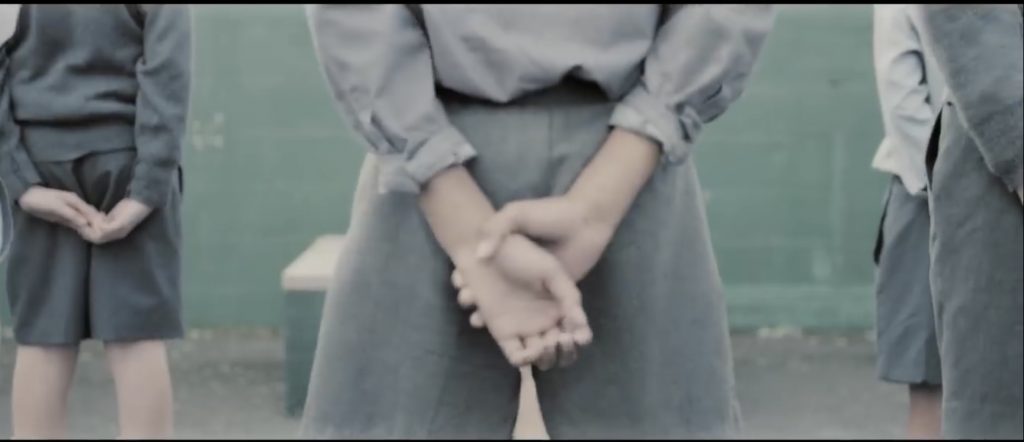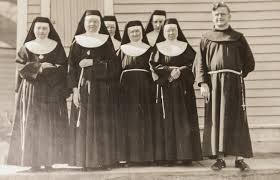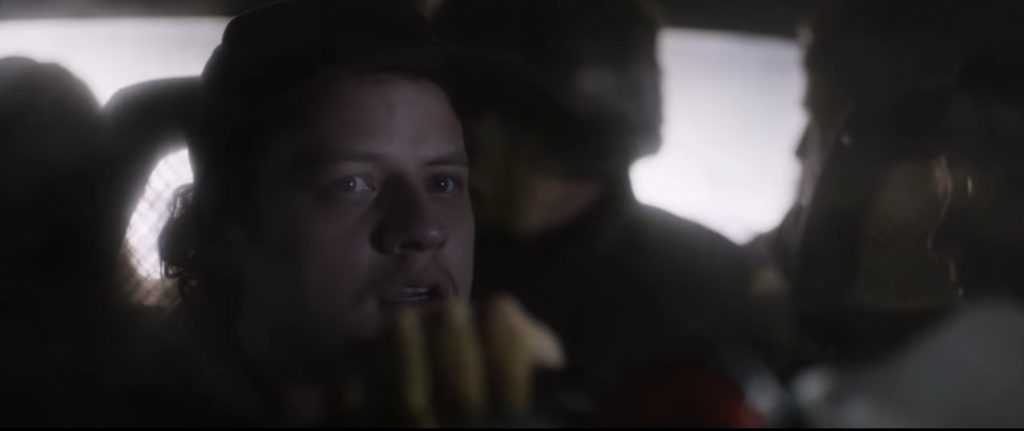Netflix’s Coming Home in the Dark (2021) is thought provoking. It’s a film that suggests the possible effects of neocolonialism on Indigenous lives. The film gives a misleading narrative of Indigenous single mothers, while leaving out the other half of the story. As well, the movie highlights a legacy of broken Indigenous families due to the boarding school experiences. Using violent imagery and characters this film makes suggestions about Indigenous males. The film goes on to suggest Indigenous males lack parenting skills. Further, the film suggests Indigenous women cannot parent or love due to boarding school experiences. Finally, it implies a class system exists in Indigenous societies, while asserting the loss of community and the final outcome. This film requires you to do a lot of reading between the lines.
The movie grabbed my attention for a few reasons. It speculated the negative effects of colonialism on Indigenous children. As well, it suggested that neocolonialism continues to impact following generations-mothers and their children. However, in this case, this film seems to demonize those effected-the survivors who experienced those boarding schools. Further, this movie is a prime example how capitalism invades personal and private lives where evil corporation actors can’t be held for liability because corporations shield people from personal responsibility. I would of loved to watch the audience reaction to this movie, since that is telling.

Another thing about this movie: it attempts to paint a positive image of single Indigenous mothers. But it leaves out oral history of Indigenous girls tortured at these boarding schools. Indigenous girls who ran away from them. Indigenous girls who never learned how to love. And Indigenous girls who never learned how to parent. And the violent side of Indigenous women. This movie only presents one side of the story, which isn’t positive in my view.
You got the whole place to yourselves. Perhaps, I should introduce myself. I am Mandrake. I am a Magician. I make things disappear.
.
This film conveys a narrative where Indigenous women are “victims.” I think Indigenous women can be strong. But the film chooses not to pursue that narrative-perhaps for political reasons.
I find it suspicious why the producers present one side of a narrative to paint a picture of positive single Indigenous mothers. I mean, how would that look if producers told the truth and said many Indigenous single mothers destroy their families, tear them down, and tear them apart? And it’s all their fault? That would be blaming the “victim,” and that is not the political message producers want to push in this film.

One thing the movie got right: the legacy of broken families of those in Indigenous boarding schools. It showed the blended families of Indigenous women-right up to today. However, these boarding schools’ focus was on assimilation, which this movie perfectly showed.

You know later on, when you are looking back at this occasion, right there is going to be the moment you’d wished when you did something.

The character “Mandrake the Magician” is interesting. He tortures the teacher, and the teacher’s wife, an Indigenous woman, pleads “He wasn’t one of them!” But imagine for one moment that Mandrake is Indigenous, perhaps he is, and how that might change how one sees the plot. I think the producers wanted to go there, but the producers were reluctant.
But have the courage to take the character “Mandrake” or Tubs further, in what’s not said, but implied in this movie. If you read between the lines, Mandrake is Indigenous; he went to a boarding school and was tortured; now he is extremely violent; he never learned to love, his real parents never raised him or could parent him; now he’s killing white people; particularly, white teachers. Here, producers are sending a negative message to the viewers that is one-sided of Indigenous males-blame the victims.
Where you taking us?
But here’s the real unthinkable, unacceptable part of “Mandrake” or Tubs as abused Indigenous boarding school survivors. The producers show Mandrake killing two boys, which has far deeper meaning, if you read between the lines, if you see Mandrake as Indigenous. Unintentionally, or maybe intentionally, producers implied Indigenous fathers, like Mandrake, can’t love or parent their children, which is like blaming Mandrake himself for killing his own children.
Now, consider that fact that Mandrake lacks “parenting skills” of the colonizer. At this point, most people that subscribe to these “colonizer parenting skills” are set up to lynch Mandrake for killing his children. Keep in mind the colonizer banned Indigenous parenting skills in these boarding schools, but the producers don’t go there where all the dysfunction began-why?
Home!
Essentially, the producers are creating misinformation. For example, Mandrake is a danger to our society. He is killing middle class teachers. Viewers can come away with the impression of perhaps we should do something. It’s a disturbing narrative to say the least.
Whatever the intent of the producers, an “us or them” mentality is portrayed and suggested. The teacher says “You better kill me because I am going to kill you.” Whether it comes down to “survival of the fittest”, the producers take us there, and the stage is set for the final battle.
At this point, something should be said about the relationship of the Indigenous mother and her husband, a white teacher. I wondered about the basis of such a relationship. Surely, it must be based on Indigenous women self hatred, because Indigenous mothers never learned to love? Right? And be what about the white teacher? Is this like when the colonizers destroy Indigenous families from the inside out? And what about the Indigenous children? I bet the kids suffer. And that statement the Indigenous mother made “Did he rape you?” was disturbing because that kind of thing happened in boarding schools. Surely, any such relationship is built on sand. I guess that’s neocolonialism, right?
My husband wasn’t one of them.
The movie, too, sheds light on current generations of Indigenous mothers, and their reluctance to deal with the boarding school experience. Perhaps, they can’t deal with the past because of their own inability to love due to boarding school torture. Perhaps, they don’t know their history and just want to abandon it, or they just want to conceal and destroy it. At this point, the mantra is deny, deny, deny, and hide. Unintentionally, the movie shows a huge chunk missing from Indigenous women lives, which kinds of comes off as a bad indigenous mother and let’s not talk about it anymore.
Happy campers
The Indigenous boy’s impatience with “community” is telling. Here, the movie refers to failed government attempts to rebuild a destroyed feeling or sense of community among Indigenous youth. I guess that happens when you try to destroy a people with genocide.
I want you to talk about you.
Ultimately, my personal feeling is that society is indifferent to this movie. One might think “Who cares.” But I think this movie is marketed to a far-left audience-good luck making money on a political film.
In hindsight, Mandrake’s comment about making things “disappear” got me thinking. I bet Catholic Bishops whisper this about the whole Indigenous boarding school experience-literally want to kill heathens. In fact, the Catholic Church and governments have made liability “disappear” by throwing huge amounts of money at the problem in the form of lawsuit settlements-a smoother capitalists deploy. However, the legacy of boarding school experiences continues and comes down to a fight of survival of the fittest between the church, the governments, and the survivors
It’s in the past. Let’s just leave it in the past.
On the whole, as you know, the narrative being pushed in this film is Indigenous societies are class societies. In one scene, the teacher talks about his ex-wife and her fund raising-perhaps miscegenation here. However, now imagine that the producers were suggesting a new middle class like in Mexico of Indigenous people, and how there used to be only two classes: one, a rich white class, and the other, a poor Mexican class. Now, today, a poor class of Mexicans has created a middle class for itself, by taking over some of the rich white class jobs-like fund raising for cultural events or being teachers. Unintentionally, or perhaps intentionally, the producers suggest class division, class consciousness, and class warfare now exists in Indigenous societies, but that is up to you to believe whether Indigenous societies are class societies.

I hate this place
Because if one subscribes to evolution and believes it underlies a class based analysis of Indigenous societies, class warfare must be addressed. As in most models, an elite class or middle class dominates and exploits the proletariat class, lower class; therefore, if you follow the logic, today Indigenous societies engage in class struggle. But in all cases of evolution, eventually a revolution happens when a class reaches consciousness. And just like when capitalism is overthrown or becomes obsolete and enters socialism, it is violent-and so goes Indigenous capitalist societies with the underlying premise of evolution.
Ultimately, when one talks of class warfare, cultural hegemony a.k.a state domination will come into the discussion. In regards to Indigenous societies, this means the ruling Indigenous class that manipulates the culture of it’s society, or to put it more bluntly, the dominant ideology, in order to make it’s world view the accepted cultural norm-the everyday taken for granted common sense a.k.a ideology. After all is said and done, in the class, cultural hegemony, neocolonialism, and evolution analysis, revolution is natural and inevitable-if you really believe in neomarxism.
Try again!
Of course Marxist theory a.k.a capitalism has a serious problem. Rather than capitalism developing into socialism, the opposite occurred where Russia reverted back to capitalism from socialism. I guess the academics will have to revise their theory to account for this anomaly,